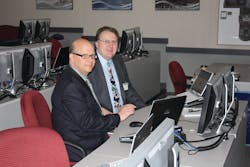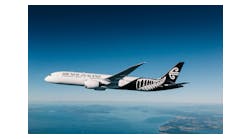Welcome to the final issue of AMT for 2011. Where has this year gone? The last few months in particular seem like a blur. Recently the entire staff has all been very busy with the launch of www.AviationPros.com, the new Cygnus Aviation web site. I hope by now you’ve had the chance to visit the new site. Thanks to Barb Zuehlke AMT’s senior editor for doing a great job of putting together this Product Showcase and Tools and Equipment supplement. While Barb has been in the office taking care of business, I have been traveling taking in several industry tradeshows and events.
One of these activities was a recent trip to Seattle, WA, where I attended the AMTSociety IA renewal training event. Approximately 60 A&P/IA technicians were present coming from the usual array of aircraft maintenance segments including antique airplane restoration shops, helicopter operators, aircraft maintenance schools, corporate aircraft operators, and a few from the military, airlines and Boeing. A show of hands revealed most of us in attendance were well over the age of 50; few if any under the age of 40 – one more reminder of the current aging group of aircraft maintenance professionals.
The next day while visiting the Boeing Commercial Aviation Services maintenance training group, senior manager Steve Pennington presented the Current Market Outlook Boeing’s long-term forecast of air traffic volumes and airplane demand. Perhaps some of you have already read the report released earlier this year. The reports begins by saying, “As the world commercial fleet expands to more than 39,500 airplanes over the next 20 years, the world’s airlines will need to add 460,000 pilots and 650,000 maintenance technicians, both to fly and maintain the new airplanes and to replace current personnel who are due to retire during the period.” Before leaving for a tour of the wide-body factory in Everett I was given a demonstration in the Boeing 787 training lab. As was explained, the 787 is a high-tech airplane which requires new types of high-tech training.
Ironically, last week a story appeared in a Wisconsin newspaper indicating that Blackhawk Technical College located in southern Wisconsin is considering dropping its long running aviation maintenance program in order to save money. I found this particularly disturbing because this was the A&P technician school I attended in the mid-1970s. In the state of Minnesota where I currently live we have gone from three down to one aviation maintenance school.
In the airline segment of aviation we have a global demand for aircraft and the personnel needed to maintain them. We have new high-tech airplanes and the high-tech maintenance training that goes with them. At the same time we have an aging group of aircraft maintenance technicians and the closing of aircraft maintenance training schools. Conflicting signs of the future.
Ron





